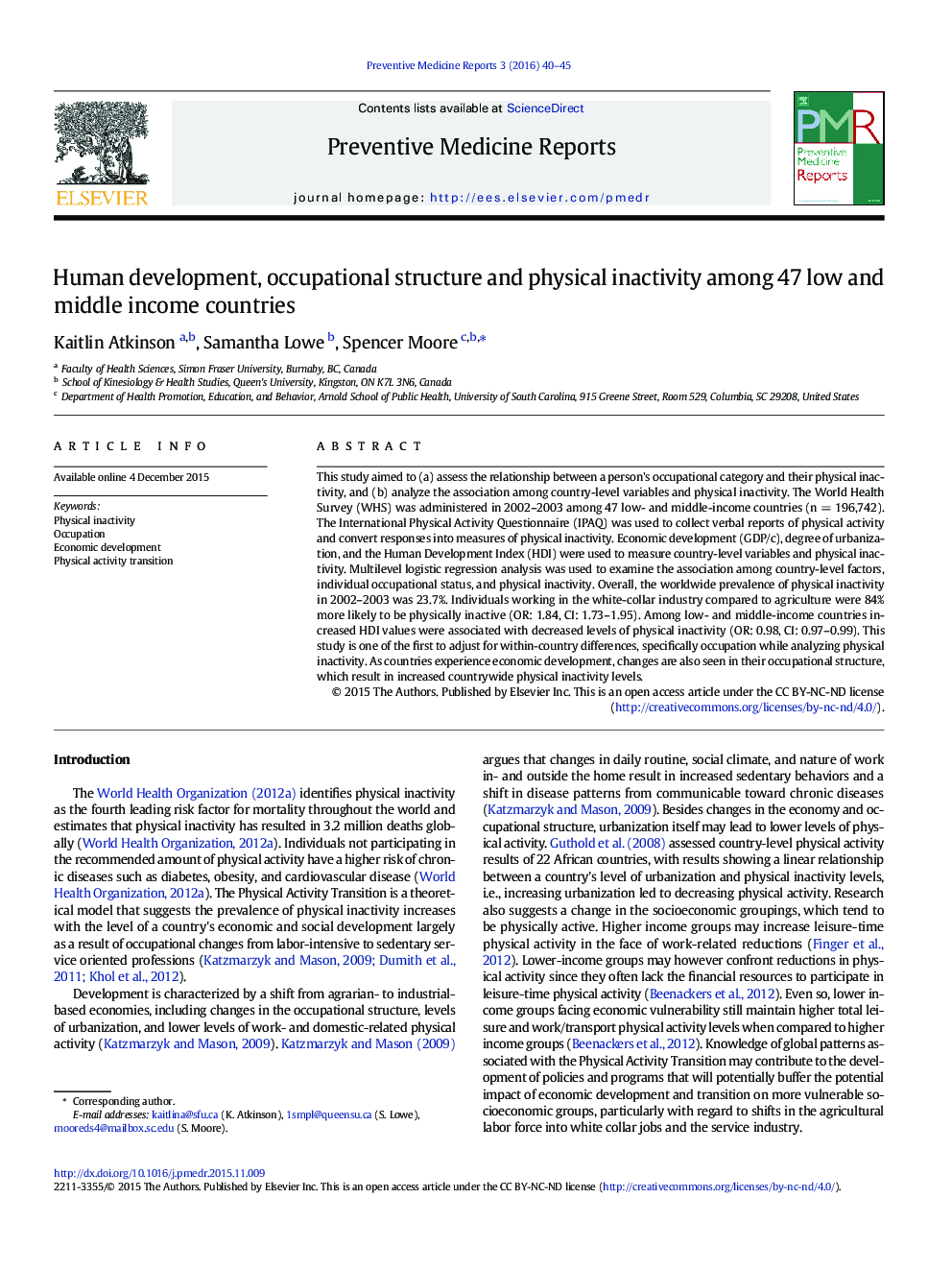| Article ID | Journal | Published Year | Pages | File Type |
|---|---|---|---|---|
| 4202329 | Preventive Medicine Reports | 2016 | 6 Pages |
•We analyzed the relationship between occupation and physical inactivity.•The IPAQ was used to measure the level of physical inactivity.•All occupations other than agriculture were more likely to be physically inactive.•Gender, income and urban/rural are positively associated with physical inactivity.•The HDI was inversely associated with physical inactivity.
This study aimed to (a) assess the relationship between a person's occupational category and their physical inactivity, and (b) analyze the association among country-level variables and physical inactivity. The World Health Survey (WHS) was administered in 2002–2003 among 47 low- and middle-income countries (n = 196,742). The International Physical Activity Questionnaire (IPAQ) was used to collect verbal reports of physical activity and convert responses into measures of physical inactivity. Economic development (GDP/c), degree of urbanization, and the Human Development Index (HDI) were used to measure country-level variables and physical inactivity. Multilevel logistic regression analysis was used to examine the association among country-level factors, individual occupational status, and physical inactivity. Overall, the worldwide prevalence of physical inactivity in 2002–2003 was 23.7%. Individuals working in the white-collar industry compared to agriculture were 84% more likely to be physically inactive (OR: 1.84, CI: 1.73–1.95). Among low- and middle-income countries increased HDI values were associated with decreased levels of physical inactivity (OR: 0.98, CI: 0.97–0.99). This study is one of the first to adjust for within-country differences, specifically occupation while analyzing physical inactivity. As countries experience economic development, changes are also seen in their occupational structure, which result in increased countrywide physical inactivity levels.
